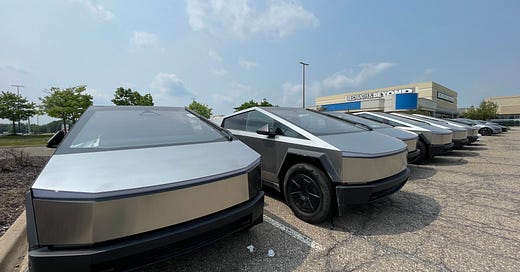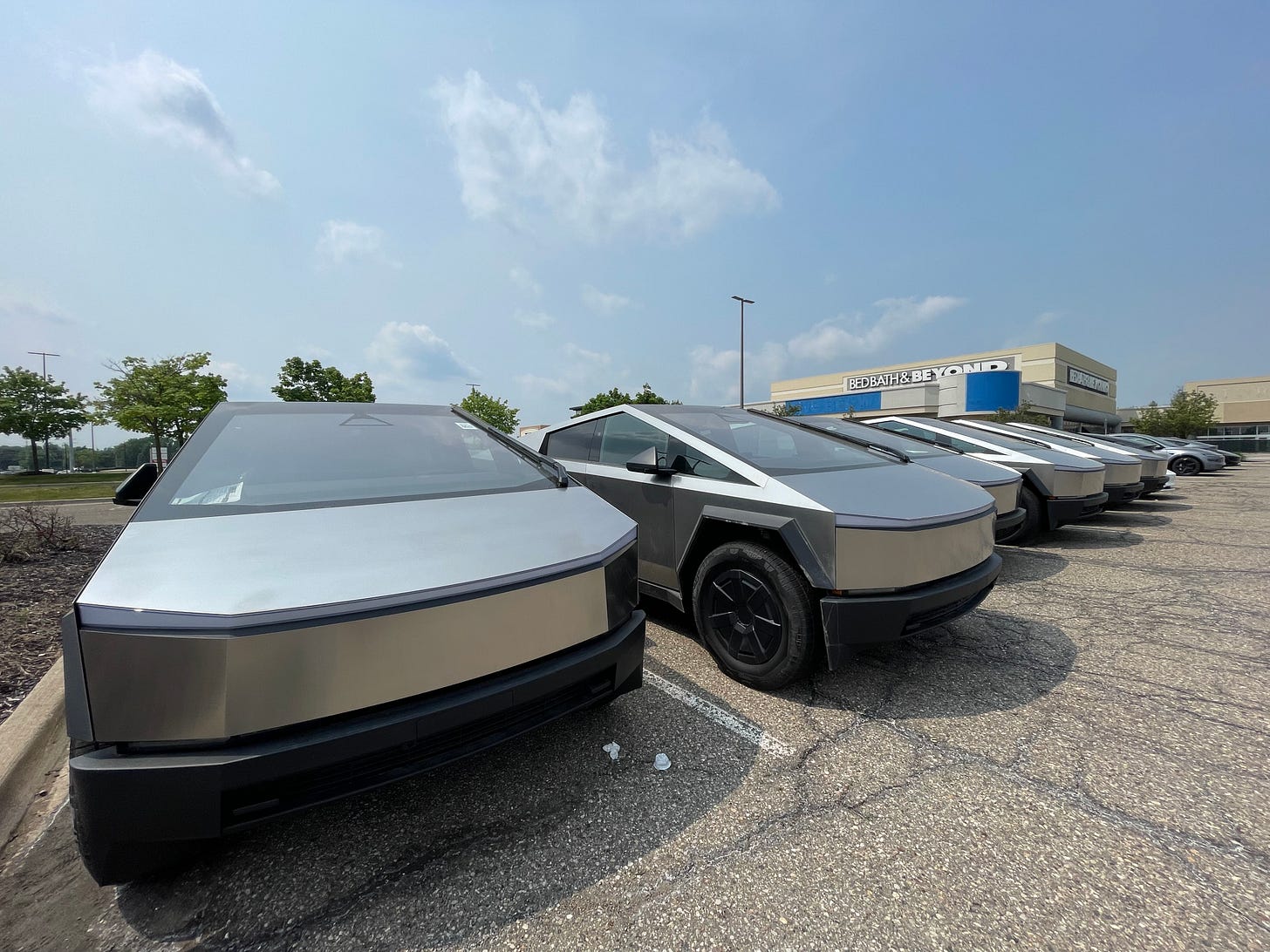Greetings from Motown!
We were warned.
Western policy makers, manufacturers and the U.S. military establishment have worried for a long time about China’s near total dominance of the supply chain for high-performance magnets made with rare earth minerals such as neodymium.
Rare earth-enhanced magnets make an increasingly electronic world go around. It should not have been a surprise that China responded to Trump’s trade war by choking off U.S. and European access to critical minerals and high performance magnets used in cars and military hardware.
And yet, only now are the alarm bells ringing about this risk from the Trump trade war. There are no rules in a knife fight, remember?
Automakers are hammering the glass the hardest.
U.S. and European automakers are still recovering from the damage done by the COVID-era disruptions of global semiconductor production.
China’s magnet play threatens to shut down assembly lines again. Some suppliers have already been forced to suspend production of systems that require Chinese-produced magnets.
Trade groups representing U.S. auto makers and parts suppliers told the White House that U.S. auto factories could shut down soon. The May 9 letter was reported by Reuters. This week, suppliers amplified that warning, pleading for immediate action by the White House to avoid production shutdowns and layoffs.
European Union groups are also calling for a ceasefire in the Magnet War, and bemoaning their dependence on China for such critical technology.
S&P Global highlighted the risk to EV supply chains from China’s moves to cut off magnet shipments. If a temporary halt to EV output was the only problem, that would be hard on Tesla, Rivian and Lucid, but legacy automakers could manage.
There’s panic in Detroit (and Germany) because China’s squeeze play could shut down production of the combustion trucks and SUVs that pay the bills at General Motors, Ford, Stellantis North America - and are critical to every other legacy North American auto producer.
Automakers use magnets everywhere in a vehicle - from the small motors that control seats and windshield wipers to the powerful magnets in electric vehicle drive systems.
As ever, it is difficult to predict how this will play out. China’s government said on June 5 that Trump spoke with Chinese leader Xi Xinping.
By the time you read this, Trump and Xi may have issued a statement pledging a timely resolution of the magnet blockade. However, the magnet blockade is part of a much broader web of conflicts that includes U.S. restrictions on shipments of powerful artificial intelligence chips and Trump’s decision to refuse visas to Chinese students.
There are companies trying to ramp up U.S. production of critical minerals and magnets. They would be rebuilding an industry that U.S. companies, such as General Motors, decided was too dirty and cheap for America. More on that in this Sinocism Substack by Bill Bishop.
The Trump Administration’s concern about critical minerals lies behind the President’s crusade to acquire Greenland, a rare earths deal with Ukraine and an order to expand deep-sea mining.
None of these ventures will replace Chinese production any time soon.
Never have so many people wanted a TACO so badly.
Detroit slams the brakes on EVs
It’s tough to improve on the headline that Bank of America auto analyst John Murphy put on his latest “Car Wars” study of the U.S. automotive product pipeline, released June 4:
Car Wars 2026-2029: The ICE Age Cometh as EV Plans Freeze
Surprise, surprise: Disappointing sales and heavy financial losses have convinced GM, Ford and Ram/Jeep-owner Stellantis to delay or scrap dozens of planned EV models, BofA concludes.
The result is a “major pothole” in overall new vehicle launches for the North American market over the next four years, Murphy told the Detroit Automotive Press Association. BofA forecasts just 29 new model launches in Model Year 2026, well below the 41 launch annual average for 2006-2025.
Tariffs, the “powertrain conundrum” and likely easing of emissions standards have slowed new vehicle activity to a crawl, Murphy said.
Other conclusions from the 2025 Car Wars study:
Internal Combustion Engines (ICE) will power 38% of the models offered in 2026-29, compared to 34% for EVs and 28% gas-electric hybrids. The shift away from EVs within the past year is ‘jaw-dropping,” Murphy said.
The retreat from EV investments and operations already in the ground could result in more “multi-billion dollar writedowns,” Murphy said.
More than 80% of the new models offered by the Detroit Three over the next four years will be combustion trucks, expected in 2028 and 2029.
Japanese and Korean automakers will double down on affordable sedans, filling the void left by the Detroit brands at a time when more consumers are balking at high new vehicle prices.
German automakers are plowing ahead with EVs, pushed by EU regulations. “This may create a mismatch with the (North American) market,” Murphy said.
Crossovers - those look-alike “SUVs” built on sedan chassis - have peaked. Still, 47% of new models over the next four years will be car-based SUVs, down slightly from 50% during the 2016-2025 period.
Automakers face a rough ride, Murphy said, but he does not expect a recession. Why? Because he sees 10 million vehicles worth of pent-up demand.
Legacy automakers and their dealers have a $1.2 trillion revenue opportunity IF they can better use technology and improve service shop efficiency and customer relations to capture more after-sale repair business. The word “IF” does a lot of work in that sentence.
Tesla could replace up to 90% of its current models - leading the industry in that ratio. But “that’s definitely dubious,” given Tesla’s track record of missing launch deadlines, Murphy said.
Meanwhile, everyone’s talking about the Cybertrucks nobody wants.
More later…




Australia is a significant player in the global neodymium and rare earth supply chain, with notable resources and production capacity. China may well be largest producer of rare earth elements, including neodymium, Australia holds a prominent position as the third-largest producer and is considered to have substantial reserves. Still a drop in the ocean compared to China, however Brazil, Mynamar and other countries now play a major role.